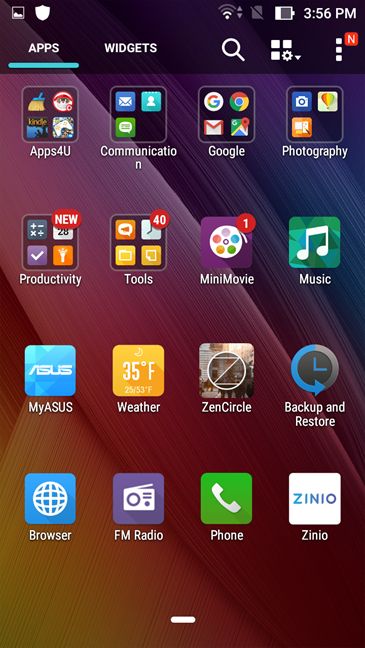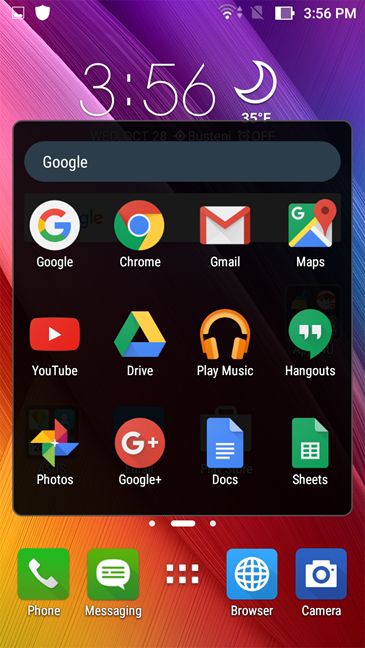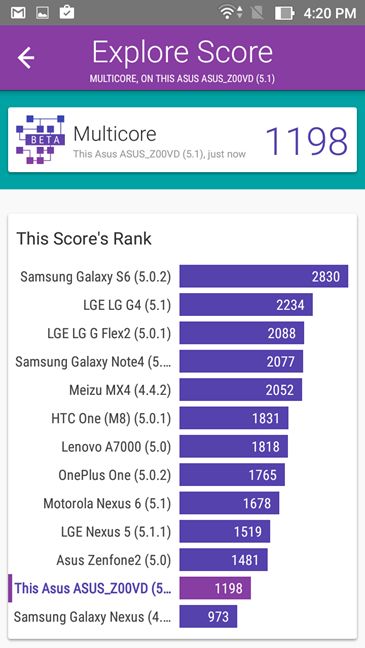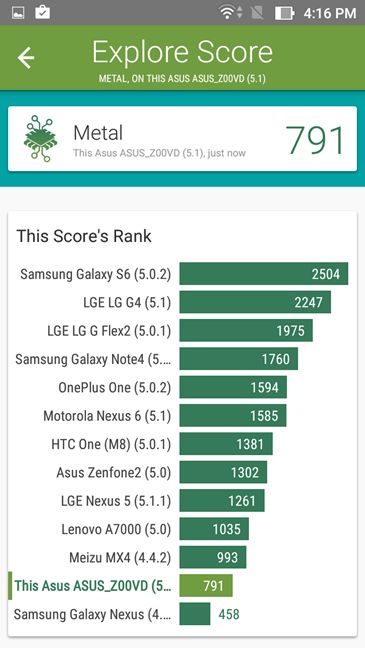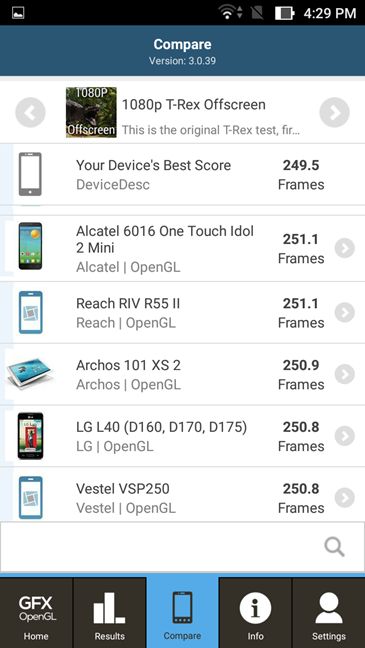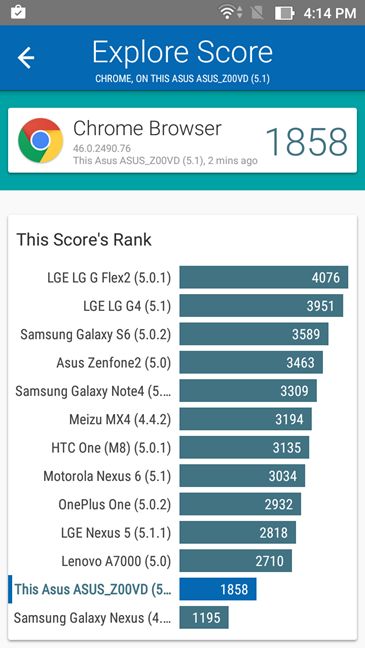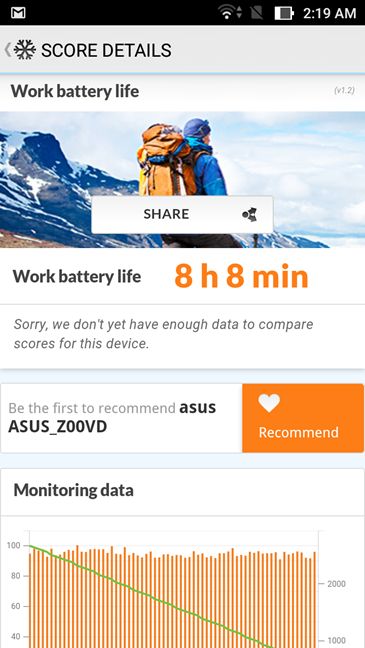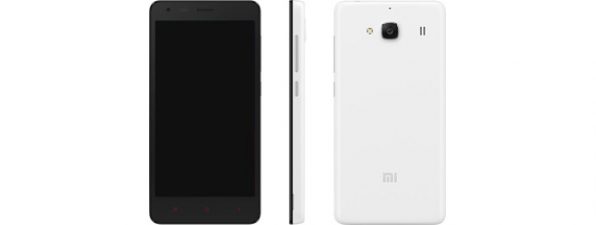
Android 5.1 Lollipop, ASUS ZenUI & Bundled apps
The ASUS ZenFone Go comes with Android 5.1 Lollipop and with ASUS' proprietary interface skin called ASUS ZenUI. We've seen this user interface on the ASUS smartphones we've previously tested and we like it. It's an elegant yet clean user interface that adds simplicity and beauty to the Android operating system. It's also very well optimized so that it doesn't slow down your device.
What we're starting to dislike though, is the fact that ASUS tends to bundle more and more apps on their devices. The ASUS ZenFone Go has no fewer than 52 apps preinstalled on it. That is too much in our view.
Not to mention the fact that some of the bundled apps are redundant. For instance, you have two music apps ( Music and Play Music ), two note-taking apps (Quick Memo and SuperNote) and even two built-in web browsers (Browser and Chrome).
Here are a few of the "non-Google" ASUS apps that you might find interesting enough to keep:
- ASUS Support - Gives information about the Zen UI and support for any smartphone-related problems.
- MyASUS - Offers access to 24/7 support from ASUS.
- Do It Later - Helps you create and organize daily tasks, reminders, notes and other planning tools.
- MiniMovie - It will create movies from the photos saved on your smartphone, which you can then share on social media.
- Share Link - An app that will help you transfer files between your smartphone and a computer without needing to use a mobile connection.
- ZenCircle - A social network that works by sharing smartphone created videos.
The ASUS ZenUI is a nice addition to the default Android 5.1 Lollipop interface. However, its elegance and simplicity is clouded by the huge number of bundled apps. We feel like ASUS exaggerated with the number of bundled apps. It's very likely that you will want to uninstall or disable many of them.
Performance in benchmarks
This is the last section of our review and maybe the most important one, at least for some of our readers. Let's run some benchmarks and see how well the ASUS ZenFone Go fares in terms of processing power:
We'll start by measuring the CPU performance of the ASUS ZenFone Go, with the help of the popular benchmark app Vellamo. The first set of tests we used for this smartphone is called Vellamo Multicore and measures the processor performance when running multiple tasks simultaneously. The ASUS ZenFone Go managed to achieve a score of 1198 points. Even if it's not seen in the screenshot below, this score reveals a similar performance to that offered by a Samsung Galaxy S3, a similarly hardware powered device.
To measure the performance offered by the CPU in single task operations, we use Vellamo Metal. This set of tests shows how well a CPU handles apps that don't know how to use more than one core. There are many such apps in the Android ecosystem, so this is quite an important test. ASUS ZenFone Go got 791 points, which shows that it does better than the Samsung Galaxy S3.
Another important performance aspect when assessing a device is its gaming performance. To measure it, we use GFXBench GL Benchmark. The tests we consider relevant in order to be able to correctly rank a device, are the Manhattan and T-Rex tests. We only take into consideration their offscreen versions, as that means they are run at a 1080p resolution, regardless of the native resolution of the tested device.
Unfortunately, we couldn't run the Manhattan test on the ASUS ZenFone Go, as its API is not supported by this smartphone. However, we were able to run the T-Rex test and the ZenFone Go managed to render 249.5 frames - a similar result to what you'd get from a Samsung Galaxy Ace. To all the gamers out there… this is a poor result and it means this smartphone is not something we'd recommend to you.
Next, we should also take a look at how this device fares in more mundane activities, like browsing the web. To measure its performance in this area, we tested the ASUS ZenFone Go with Vellamo Explore. It achieved a score of 1858 points, which is a good result. The old Samsung Galaxy S3 scores 1780 points in this test and the Xiaomi Redmi 2 scores 1670 points.
Finally, we tested the autonomy offered by the battery of the ASUS ZenFone Go. It lasted us for a day when we didn't run any benchmarks. 🙂 However, to get a better image, we also ran the Work battery life tests from PCMark. The results we got were good: 8 hours and 8 minutes. That means that the smartphone should have no problems lasting you for a day in normal conditions. That is, of course, if you don't run power hungry apps like benchmarks or video games.
All the benchmarks we ran show that the ASUS ZenFone Go is a smartphone that doesn't aim to convince you to buy it because it's powerful. It's a budget device and that shows. However, given its very low price tag, we can't say that we expected too much hardware power. It's just enough to keep your experience decent.
Verdict
The ASUS ZenFone Go is not a powerful piece of hardware and that shows in the benchmarks we ran. However, its price is so low that you can't really complain. It's enough to get its job done. We were not impressed by the camera quality. However, it compensates some of its flaws through the good software and the multitude of photo options. Another thing that we disliked is the large number of apps bundled with this smartphone and we can't really understand why ASUS bundles so many redundant apps. On the positive side, we like the design of the ASUS ZenFone Go. ASUS puts effort into making its budget devices attractive too. Finally, the decisive points in making the ASUS ZenFone Go a reasonably attractive smartphone are its Dual SIM feature, its display and, last but not least, its very low price. If you're looking for a decent smartphone and don't want to spend a lot of money, the ASUS ZenFone Go might be an option.


 06.11.2015
06.11.2015 
